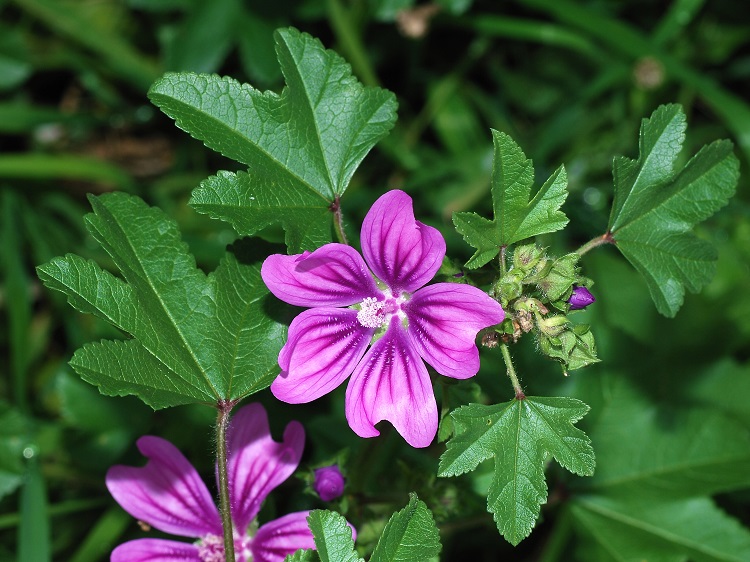Do you know mallow tea and its medicinal benefits? This plant has been surprising scientists in the medical field in recent years thanks to its complexity of beneficial properties for the human body. Here you will find all the best and main information about her.
Despite being best known as an ornamental plant, with beautiful flowers that decorate arrangements and vases, mallow has stood out as a plant with high medicinal capacity. We therefore separate a list with the most recent discoveries about these properties.
So, find out what mallow is and check out its benefits. Also learn how to prepare natural tea with this plant.
Table of Contents
Benefits of mallow tea for health
Mallow tea is traditionally used for various medicinal purposes, but some of them are not true. Therefore, we made a list of the healthy benefits that have already been proven by medicine. Check out:
- It has high antioxidant potential
- protects the kidneys
- It’s good for the liver
- Fights skin inflammation
- Has laxative effect
- protect the heart
See how amazing the list of benefits of mallow tea is? However, it is important to make clear that these are the benefits proven by science to date. Of course there are other healthy advantages, but these are still being studied or undergoing testing.
Therefore, we chose those that were mentioned because there is already a scientific basis that proves them. In this way, we make sure that all of these are based on original and certified research and studies. Below, you’ll learn more about each.
Medicinal properties: See more about the benefits
Now you will see a little more about each of the benefits listed above. This is also where you will confirm that all these benefits are true. Information is based on scientific sources and official research. Check out our scientific references at the end of the article!
It has high antioxidant potential
First, a study proved that mallow tea has antioxidant action , which prevents damage caused by free radicals and reduces the chances of diseases such as cancer, for example .
The antioxidant effect of food is very important to protect the cell from some known villains. Free radicals are substances that enter our body through food and cause cell oxidation, which hinders their life cycle and opens the door to various diseases.
Among the diseases prevented through the consumption of mallow are cancer, diabetes, Parkinson’s disease, Alzheimer’s, degenerative diseases and premature aging.
Protects the kidneys
A research carried out with laboratory rats was able to prove a great benefit of the composition of mallow: benefit for the kidneys . That’s right! According to the study, the plant has substances that prevent diseases and help treat kidney problems .
Laboratory processes induced kidney problems in rats, which were then given extracts with mallow substances. As a result: the animals had a significant improvement in all the kidney problems they had.
Thus, the study did not even need to perform tests on humans to scientifically prove that the medicinal substances in mallow protect the kidney from various problems and, especially, from ischemia-reperfusion.
It’s good for the liver
Another benefit of mallow tea is that it helps the liver to recover from injuries and improves the functioning of this organ . Thus, there is a great importance of mallow as an aid in the treatment of liver diseases. After all, this is a hard-working organ and is extremely important for health and well-being.
The mallow tea works as a medicine that acts directly on the liver, increasing its defense and its recovery in case of illnesses and problems. However, it is important to make it clear that liver disease is serious, so seek a doctor at the first symptoms.
Fights skin inflammation
A Brazilian study proves a very peculiar benefit of mallow: it combats skin inflammation, especially psoriasis . Few plants and foods are able to promote this benefit, which further increases the recognition of mallow in the world scientific scenario.
Scientists have discovered this benefit by applying substances extracted from mallow in laboratory mice. As a result, they were surprised by the anti-inflammatory and anti-psoriatic capacity in animals that had skin problems.
Despite having applied the mallow extract directly on the skin of the animals, these benefits can also be acquired through the oral consumption of mallow and its derivatives (teas and supplements).
It is therefore recommended to prepare 2 cups of mallow tea a day. Some cups should be drunk normally, the other should be used to wash the inflamed or psoriasis part of the skin.
Has laxative effect
Another study, this time carried out in Tunisia (North Africa), proved that mallow has laxative properties . Thus, the tea from this plant can be used to treat a common ailment: constipation (constipation).
The study showed that some substances in mallow are able to increase gastrointestinal motility, which overloads the colon and cause the laxative effect. In addition, the plant is responsible for stimulating the intestinal secretion of water, which moistens the feces, facilitating their exit.
Protect the heart
Last but not least, science has shown the effect of promoting improvement in cardiac health as true . This is also a result of its antioxidant effect. But, in addition, mallow has cardio-protective substances.
Regular consumption of mallow tea can protect the heart from oxidative stress and reduce minor inflammation. Therefore, it is highly recommended as a natural heart medicine.
What is mallow?

The mallow ( malva sylvestris L .) Is a plant of the family Malvaceae. It is best known as an ornamental plant due to its beautiful flowers. Records reveal that it is a plant originating in Europe , where it has been used in natural medicine and as a vegetable since the 8th century BC. Ç..
There are 243 genera of the Malvaceae family in the world and approximately 80 of them are found in the Brazilian flora, such as okra, cotton and marsh, for example. Therefore, it is necessary to be very careful not to confuse the true species (Malva sylvestris) with other similar species, as their medicinal properties are different.
The flowers of mallow , fresh or dried , are widely consumed in European countries, even more than the leaves. However, to produce mallow tea you will only need the dried leaves of this plant.
Attention : A common mistake is to confuse common mallow (Malva sylvestris L.) with white mallow (Sida cordifolia). Despite being related and belonging to the same family, they are quite different in their medicinal properties.
How to make mallow tea

The mallow flowers are the darlings in gastronomy, but to produce the tea you will need the dried leaves of this plant. It is not possible to prepare the teas using the flowers, so don’t try. Here’s how to make the best natural mallow tea:
- First, boil 1 cup of water on the stove or microwave.
- Then turn off the heat or take it out of the microwave.
- Add 2 tablespoons of chopped mallow leaves and cover for 10 minutes.
- Finally, strain and drink without sweetening.
It is recommended to take this tea 1 to 3 times a day. Take 3 times when treating constipation. In other cases, drink a maximum of 2 cups of tea a day. The best time is in the morning and in the evening.
Contraindications and important care
First of all, it is important to make it clear that excessive consumption of this tea can lead to intoxication. It is also a tea that should be avoided by pregnant and nursing women, except under medical advice.
Consuming mallow tea every day for a long time can also cause decreased absorption of some nutrients in the body. Also, avoid consuming this tea with medications, as it can cause reactions or nullify the effect of the medication.
My name is Ellie Lauderdale, MD and I am USA based professional Nutritionist .
I am a Registered Dietitian Nutritionist and board certified specialist in sports dietetics who is trained in integrative medicine. I have worked with hundreds of clients, from those suffering with chronic disease to professional and olympian athletes. My goal is to help optimize you from the inside so that you can feel, perform, and look your best on the outside.


